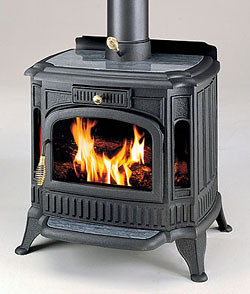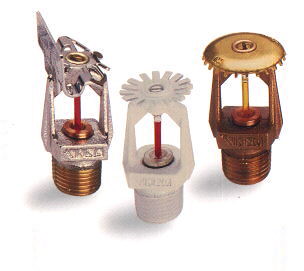Hidden Fire Sprinkler Heads
Monday
 For those worried that installing fire sprinklers in a home or office will result in ugly sprinkler heads or exposed water pipes, they might be disappointed. Todays technology means that there are a variety of sprinkler applications for any type of home or office building.
For those worried that installing fire sprinklers in a home or office will result in ugly sprinkler heads or exposed water pipes, they might be disappointed. Todays technology means that there are a variety of sprinkler applications for any type of home or office building.Sure, most commercial buildings have those exposed sprinkler heads that stick down from the ceiling. But it's more than likely the reason that it was the least expensive way to go. The water pipes can easily be fitted up in ceilings and away in walls. And there are many sprinkler heads on the market that can be rather difficult to spot in the ceiling. It's possible to mount the head so that it is flush with the ceiling, with a cap color that matches the room paint color. The cap simply falls away when the sprinkler system is activated. It might mean more money to have the hidden or hard-to-see sprinkler heads, but it's a great way to protect your property and your family and at the same time - your rooms still look great!
Don't let something simple as aesthetics come between you and safety. Fires kill and fires destroy. One sprinkler in one room is usually enough to put out any fire with very minimal damage to a room.
If you need to find a local fire sprinkler installation company, post your request for free with ConstructionDeal.com. It's the smart way to find a Fire Sprinkler Contractor - it's fast, free and easy!
Labels: Fire Sprinkler Installation, Fire Sprinkler Myths, Hidden Fire Sprinkler Heads
Winter Heating Safety Tips
Friday
 We recently reported the winter heating fire danger data and we also wanted to provide some winter heating safety tips from the NFPA:
We recently reported the winter heating fire danger data and we also wanted to provide some winter heating safety tips from the NFPA:- "When buying a new space heater, make sure it carries the mark of an independent testing laboratory and is legal for use in your community. (Some communities do not permit portable kerosene heaters, for example.)
- Install your stationary (fixed) space heater according to manufacturer’s instructions or applicable codes or better yet, have it installed by a professional.
- Plug your electric-powered space heater into an outlet with sufficient capacity and never into an extension cord.
- Use the proper grade of the proper fuel for your liquid-fueled space heater, and never use gasoline in any heater not approved for gasoline use. Refuel only in a well-ventilated area and when the equipment is cool.
- In your fireplace or wood stove, use only dry, seasoned wood to avoid the build-up of creosote, an oily deposit that easily catches fire and accounts for most chimney fires and the largest share of home heating fires generally. Use only paper or kindling wood, not a flammable liquid, to start the fire. Do not use artificial logs in wood stoves.
- Make sure your fireplace has a sturdy screen to prevent sparks from flying into the room. Allow fireplace and woodstove ashes to cool before disposing in a metal container, which is kept a safe distance from your home.
- Turn off space heaters whenever the room they are in is unoccupied or under circumstances when manufacturer’s instructions say they should be turned off. Portable space heaters are so easy to knock over in the dark that they should be turned off when you go to bed, but make sure your primary heating equipment for the bedrooms is sufficient to avoid risks to residents from severe cold.
- Do not use your oven to heat your home.
- Make sure fuel-burning equipment is vented to the outside, that the venting is kept clear and unobstructed, and that the exit point is properly sealed around the vent, all of which is to make sure deadly carbon monoxide does not build up in the home.
- Inspect all heating equipment annually, and clean as necessary.
- Test smoke alarms monthly; install a carbon monoxide alarm in a central location outside each sleeping area."
* source - nfpa
Labels: Fire Statistics, Heating Dangers, Safety Tips
Winter Heating Fire Danger
Wednesday

There are many reasons for fires breaking out because of this equipment, but it is usually a result of people not always being able to monitor it and stay in the room with the heating element for periods at a time.
From statistics, according to the National Fire Protection Association:
- In 2003, heating equipment was involved in an estimated 53,200 reported U.S. home structure fires, with associated losses of 260 civilian deaths, 1,260 civilian injuries, and $494 million in direct property damage.
- In 2003 heating equipment fires accounted for 14% of all reported home fires (second behind cooking) and 8% of home fire deaths.
- Space heaters, excluding fireplaces, chimneys, and chimney connectors, were involved in 26% of the home heating fires but 73% of the deaths.
- Excluding small confined fires, heating equipment too close to things that can burn, such as upholstered furniture, clothing, mattress, or bedding, is by far the leading factor contributing to home heating fires (28%) and home heating fire deaths (50%).
- Chimneys and chimney connectors accounted for the largest share (40%) of home heating fire incidents. Failure to clean accounted for over half (59%) of the confined chimney and chimney connector fires.
To find quality, professional fire sprinkler installers in your area - look no further than ConstructionDeal.com. We'll match you with several fire sprinkler companies, usually in less than 48 hours, and you'll be able to make sure your property and your family are well protected
Labels: Fire Dangers, Fire Sprinkler Installation, Fire Statistics
Rising Candle Use: Safety Concern?
Friday

Safety and industry officials are weighing new labels and standards for candle accessories that would lay out warnings more clearly. And the nonprofit National Fire Protection Association has stepped up its campaign to warn homeowners and children about the potential dangers of candles.
Labels: Fire Dangers, Fire Statistics
FAQs - Do All Sprinklers Come On At Once?
Thursday
 Just as homeowners and business owners worry too much sprinkler water will cause more damage than a fire, the thought of all the sprinklers coming on at the same time is also a matter of concern. If there is a fire a one room, they ask, will all the sprinklers throughout the house or building come on and spray where there is no fire?
Just as homeowners and business owners worry too much sprinkler water will cause more damage than a fire, the thought of all the sprinklers coming on at the same time is also a matter of concern. If there is a fire a one room, they ask, will all the sprinklers throughout the house or building come on and spray where there is no fire?The truth is that the fire sprinkler systems are set up to react only to the temperature change within the room with the fire. So if you have a fire in a kitchen, the temperature will rise and trigger the sprinklers to come on in that room. If the fire were to spread, that change in temperature will allow more sprinklers to come on but only in the new location and not all across the building.
What's odd is that most sprinkler applications wouldn't even have enough water pressure to turn on all the sprinkler nozzles at the same time.
Another myth is that smoke will set off a fire sprinkler system. This is also not true. Smoke will set off a fire alarm, but residential and commercial sprinkler installations are set to turn on for temperature changes only. They're usually set to go off between 155 and 165 degrees Fahrenheit.
Don't let worrisome tales and myths about Fire Sprinkler Systems prevent you from saving your property, your business, or your family. To find a local sprinkler installation expert, post your request with ConstructionDeal.com. Our network of fire sprinkler companies will help give you true peace of mind and it's free to find a pro in your area!
Labels: Fire Sprinkler Installation, Fire Sprinkler Myths, Residential Fire Sprinklers
Water Mist Fire Suppression Systems
Tuesday
 If you're looking for fire sprinkler protection in a building that is highly sensitive to excessive water, you might consider a water mist system. A water mist fire suppression system can deliver a fine misting to extinguish nearly any type of fire but without a huge amount of water. It's perfect for school, libraries, museums, and other commercial applications to minimize damage and to cut down on any "downtime" for the business or facility.
If you're looking for fire sprinkler protection in a building that is highly sensitive to excessive water, you might consider a water mist system. A water mist fire suppression system can deliver a fine misting to extinguish nearly any type of fire but without a huge amount of water. It's perfect for school, libraries, museums, and other commercial applications to minimize damage and to cut down on any "downtime" for the business or facility.The water mist system can delivered a finely controlled spray over possible fire-prone spots, such as kitchens in hotels or restaurants where grease and oil fires are common. These systems can sometimes put out fire with just a few gallons of misted water. The water mist has a higher heat absorption ability that regular water sprays. Because the mist is so effective, it can mean that the system stays on for shorter durations.
These new systems are just now coming out of testing phases. The systems needed to be developed to replace the Halon 1301 because of safety issues over the health dangers from that gas.
If you're interested in find a company to inspect and evaluate your building for a water misting fire suppression system, you can post your request with ConstructionDeal.com. It's a fast, free and easy way to find a fire sprinkler or water mist suppression installer.
Receive as many bids as you'd like - and more bids means you'll have the best chance of getting the right price.
Labels: Fire Sprinkler Installation, Fire Sprinkler Options, Water Damage, Water Misting



